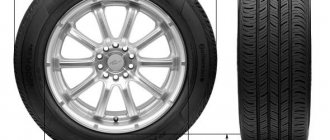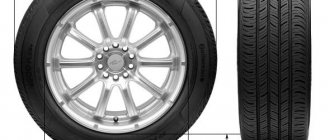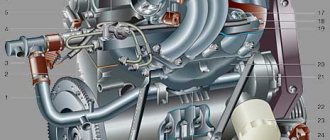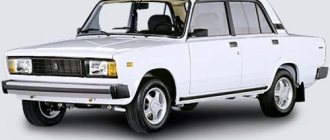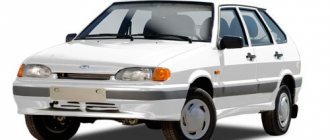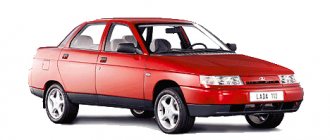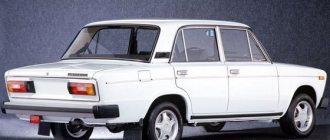The compact urban hatchback Daewoo Matiz has been produced since 1998. Thanks to its low gasoline consumption, its maneuverability and reliability, the car has gained considerable popularity in Russia. The Daewoo Matiz 0.8 engine is the most basic power unit that was installed on this car.
The motor has a lot of positive qualities, but it also has quite serious disadvantages. In this article we will look at the pros and cons of a small engine, its characteristics and repair features.
Peculiarities
Owners of cars with this engine note an interesting sound - the three-cylinder unit sounds like a motorcycle.
Although the developed power seems small, it is quite enough to give the lightweight (less than a ton) car decent dynamics. The BC in the F8CV is made of cast iron, and the cylinder head, as already mentioned, is aluminum. There are two valves for each of the three cylinders. The camshaft has an overhead placement and is located in the cylinder head bed.
The gas distribution mechanism is driven by a belt.
Important: the belt replacement schedule is after 40 thousand km. mileage If it is not replaced, a break is likely, which will lead to bending of the valves, failure of the cylinder-piston group and expensive overhaul.
The crankshaft rests on four bearings in the cylinder block. It has a tendency to wear out; to restore its characteristics, it can be polished with the installation of repair kits for liners of the appropriate size.
The cylinder liners also wear out and may need to be bored. If this is not possible, the cylinder block is relined or replaced. Worn pistons (or new ones with bored liners) are replaced with new ones of appropriate sizes; repair kits are widely available.
Description
The power unit of the vehicle on our market is represented by two modifications: F8CV is a 0.8-liter engine, 51 hp; B10S1 - power plant with a volume of 1.0 liter, 63 hp.
Since 1998, only a 0.8-liter 3-cylinder gasoline engine with a manual transmission has been installed on the car. In 2003, they began to install a 1.0 liter engine with 4 cylinders.
The sore spot of the smaller engine (0.8 liters) produced before 2008 was the ignition distributor with an electronic sensor. The sensor malfunctioned when moisture came into contact with it. After the transition to EURO-3, the problem was eliminated.
Both engines are equipped with a distributed fuel injection system, thanks to which greater power and efficiency are achieved. An exhaust gas recirculation system is also used. Particular attention should be paid to the timing belt. If it is not replaced in a timely manner, it may break, which will lead to failure of the entire gas distribution mechanism, and as a result, expensive repairs cannot be avoided. The most common malfunction of the Daewoo Matiz engine remains a malfunction of the unit due to incorrect readings of the throttle position sensor.
With the introduction of a liter engine to the market in 2002, the dynamics of the car increased significantly. The engine differs from its younger brother in improved traction throughout the entire speed range. In addition, Daewoo Matiz engine repairs have to be done less frequently due to increased reliability of the unit.
Engine F8CV
The 0.8 liter three-cylinder petrol engine was installed on the Daewoo Matiz from the very beginning of the production of this car, and at first it was the only Matiz power unit. In 2003, a 1.0 liter (64 hp) internal combustion engine also appeared on the car, and it was already a four-cylinder. The 3-cylinder S-TEC engine for the Korean car was developed jointly by Daewoo Motors and Suzuki, it is intended for use in small and compact cars.
The 0.8 liter engine has a somewhat unusual sound; it works as if it were a motorcycle engine. Despite the low power, the Daewoo Matiz with the F8CV power unit picks up speed quite quickly - for the light weight of the car (less than one ton), the engine is quite enough.
General design
The engine crankcase is cast from cast iron and is equipped with an aluminum cylinder head with cast iron guides for the valve stems. The serial number is stamped on the block on a milled area under the oil filter. The camshaft is installed in the head, the valves are driven through rocker arms. There are two engine temperature sensors at the end of the head. An electric starter is installed at the rear of the unit. The photo shows the engine cylinder block.
Each cylinder has two valves with a V-shaped arrangement - for the intake of the working mixture and the exhaust gases. This valve installation scheme made it possible to create a hemispherical combustion chamber, which is the most optimal for complete combustion of fuel. The intake and exhaust channels are located on different sides of the engine. The valve clearance is adjusted manually using locknuts on the rocker arms.
The engine is not equipped with any balance shafts. Instead, the design kept all rotating masses as light as possible. The lubrication system is also simplified to the limit. The piston pins are lubricated through a hole in the connecting rod and occur periodically - when the holes on the connecting rod and crankshaft are aligned. There is no supply of cooling oil to the bottom of the piston. The connecting rod in the upper head does not have any bronze inserts, i.e. the steel finger works on the steel head. Due to such simplifications, the actual engine life does not exceed 120 thousand km.
We recommend: DIY plastic bumper repair: all restoration methods
The ignition system of early engines was equipped with a distributor with an electromagnetic sensor, which caused a lot of complaints. At the end of 2008, the Daewoo Matiz 0.8 liter engine was modified to comply with Euro 3 toxicity standards. In this regard, an electronic module borrowed from a more powerful 1.0 liter version was introduced into the ignition system.
Malfunctions
The engine life of the Daewoo Matiz F8CV is good for its class - with proper maintenance it can travel up to 200 thousand km. But there are also a number of problems characteristic of it.
The first samples of Matiz cars were equipped with a distributor ignition system, which was distinguished by its capriciousness. The engine could stop starting due to a failure of the distribution system, and the distributor had to be completely changed due to its non-repairability. Since 2008, engines began to be equipped with electronic ignition controlled by a control unit, and this problem has disappeared.
If the Daewoo Matiz engine is having trouble, the reasons may be dirty injectors, a faulty ignition system (plugs, coils), a clogged fuel filter, or low-quality fuel in the tank.
Power unit F8CV(0.8)
The 0.8-liter engine is the main unit installed on the Daewoo Matiz car since 1998. The power unit block is cast from cast iron, the cylinder head is made of aluminum, the engine itself is 3-cylinder, in-line, gasoline, and is located transversely on the vehicle.
The unit, like all motors, has a lot of positive qualities and at the same time, has disadvantages.
Characteristics of Daewoo matiz engine F8CV(0.8):
- Volume, cm3 - 796;
- Engine power, hp - 52;
- Cylinders, pcs. - 3;
- Valves, pcs. - 6;
- Piston, diameter, mm. - 68.5;
- Compression ratio - 9.2;
- Piston stroke, mm. - 72;
- Fuel - AI-92;
- Cooling - liquid;
- Power supply system - injector.
B10S1
This is a more powerful 4-cylinder unit, producing 63 horsepower.
Interesting: the engine is an artificially weakened engine from a Chevrolet Aveo. The deforcing was done by reducing the piston stroke - other pistons, connecting rods and crankshaft were installed.
| Parameter | Meaning |
| Power | 63 hp |
| Volume | 1 l. (995 cc) |
| Number of cylinders | 4 |
| Location | Row |
| Fuel supply | Injector |
| Fuel type | Gasoline AI-92 |
| Valves in the engine | 8 |
| Cooling system | Liquid |
Timing
The rotation of the camshaft is carried out by a belt drive, which can significantly reduce operating noise. The belt drive requires special attention and regular replacement every 40 thousand km. Neglecting replacement can result in belt breakage and valve bending. On early versions of engines, the replacement interval was 60 thousand km, but after widespread cases of belt breakage, it was reduced. General view of the engine in the photograph.
The timing belt drives the pump of the Daewoo Matiz engine cooling system. To tension the belt, the drive has a separate roller.
Types of engines for Matiz
Daewoo Matiz is a compact city car, unpretentious, maneuverable and economical. Car enthusiasts appreciated it, among other things, for its financial affordability, while at a relatively low cost it offers an adequate level of comfort for the driver and passengers.
In Russia there are Daewoo Matiz cars with the following engines:
- F8CV, volume 0.8 l;
- B10S1, volume 1 l.
The first produces 51 horsepower, the second – 63. Both engines are naturally aspirated and naturally aspirated. Although the Matiz engine capacity is small, it is sufficient for confident acceleration and movement. You can determine which “heart” is under the hood by looking at the car’s documentation or by its appearance (see pictures below).
Since 1998, three-cylinder 0.8 liter units, combined with a manual gearbox, have been installed on Matiz cars. In 2003, production of cars with a 4-cylinder liter engine began.
Both engines are equipped with distributed injection, which allows them to have good power for their class and good efficiency. The design also uses an exhaust gas recirculation system.
Let's take a closer look at these motors.
As already mentioned, this is a 0.8 liter power unit; Matiz cars have been equipped with it since 1998. The engine has 3 in-line cylinders, the body is made of cast iron, and the cylinder head is made of aluminum. The Matiz engine is powered by gasoline no lower than AI-92.
| Parameter | Meaning |
| Volume | 0.8 l. (796 cc) |
| Power | 52 hp |
| Cylinders | 3 |
| Valves | 6 (2 per cylinder) |
| Compression ratio | 9.2 |
| Fuel type | 92 petrol |
| Fuel supply | Injector |
| Engine cooling system | Liquid |
| How much does it weigh | 80 kg. |
View under the hood:
Daewoo Matiz engine repair
The compact urban hatchback Daewoo Matiz has been produced since 1998. Thanks to its low gasoline consumption, its maneuverability and reliability, the car has gained considerable popularity in Russia. The Daewoo Matiz 0.8 engine is the most basic power unit that was installed on this car.
Cylinder head of Daewoo Matiz 0.8 engine
The aluminum cylinder head of Matiz 0.8 has a pastel for installing the camshaft. The valves are located in a V-shape relative to the combustion chamber. The valves are opened not directly from the camshaft, but through special rocker arms. The valve thermal clearance is adjusted manually. The procedure is not complicated, but to carry it out, strictly follow the manufacturer’s instructions and regulations.
Typical malfunctions of power plants
The power units have good performance. The engine life with careful operation and proper technical care is about 200,000 km. In general, the daewoo matiz engine is reliable and simple; the main shortcomings occur due to the failure of attachments. The main engine malfunctions include:
- Crankshaft knock;
- Breakage of the piston partitions in the area of the piston rings;
- Broken cylinder head.
We recommend: Replacing the Lacetti valve cover gasket
The main responsibility for all these breakdowns lies with the owner of the vehicle, since they mainly occur due to poor maintenance. For example, knocking of the crankshaft occurs due to overloads arising from low-quality oil, or untimely replacement of the old one with a new one.
Breakage of the piston walls and cracks in the cylinder head occur as a result of overheating.
Replacing the timing belt
Replacing parts of the gas distribution mechanism on a Deu Matiz car is not difficult and can be done independently. The main thing that the user must remember is that the marks on the shafts (camshaft and crankshaft) must be set correctly. In case of an error, you can damage the engine valves and then eliminating this damage will be much more troublesome.
Change of oil
To change the oil in a Daewoo Matiz engine you will need:
- oil with the required viscosity;
- new oil filter, part number ADG02110;
- key to 17;
- filter puller;
- rags;
- waste container;
- gloves to protect your skin from burns and hot oil.
Important: all operations must be carried out with a warm, switched off engine.
Procedure:
- the filler neck opens;
- the drain plug is unscrewed and the old oil is drained into the container;
- Then the filter is twisted with a puller. If you don’t have one at hand, you can simply pierce it with a screwdriver and use it as a lever;
- Oil is poured into the new filter and the gasket is lubricated with it;
- when the old fluid has completely drained out, the new filter is installed in place;
- then new oil is poured to the required volume, the level is controlled by a dipstick;
- The neck is closed, the engine is started for a few minutes, after which a control measurement is carried out.
The procedure is relevant for Matiz vehicles with all types of internal combustion engines.
Matiz engine tuning
The 1.0 liter engine lends itself well to tuning. It is important to understand what the Daewoo Matiz B10S1 engine consists of: it is, in fact, a derated unit from the Chevrolet Aveo, in its original configuration it has a volume of 1.2 liters. If desired, the engine can be boosted back by simply installing a piston group from Aveo, thereby returning the characteristics of the engine.
Other options for improvements:
- tuning camshaft;
- ECU flashing;
- installing a split gear;
- modifications of the intake and exhaust tracts with the removal of the catalytic converter.
All this allows you to “squeeze” engine power up to 85 hp, which is impressive for a Daewoo Matiz. This will require the installation of a new reinforced clutch, because the original one can no longer handle the torque.
Repair of power plants, main types of work
The design of the motors is simple; if necessary, maintenance or repairs can be carried out independently. Repair of the Daewoo Matiz engine is conventionally divided into current and major. Current repairs include:
- Setting up valves;
- Cylinder head gasket maintenance;
- Removal and installation of new piston rings;
- Elimination of causes of oil leakage;
- Repair or replacement of the oil pump.
Major repairs are carried out on the condition that the power unit has exhausted its service life or its operation has led to a serious breakdown and routine repairs are impractical.
To carry out major repairs, the Daewoo Matiz engine requires removal from the vehicle. How much it weighs depends on the modification, whether the unit is dry or wet; in any case, dismantling should be carried out using a winch. Afterwards, it must be disassembled, the degree of wear determined, the damaged parts rejected and replaced.
Upon completion of the repair, the engine requires running-in under gentle conditions. To achieve them, it is necessary to limit the load on the unit and not spin the crankshaft to maximum speed. The running-in period is designed for 2-3 thousand km.
Maintenance and repair
It is imperative to periodically change the oil. For a Daewoo Matiz equipped with this unit, the engine oil volume is 2.7 liters. Synthetic oil with a viscosity of 5W-30 is used. The scheduled replacement interval is 10 thousand km. mileage
As already mentioned, after 40 thousand km. mileage, the timing belt is changed to avoid breakage. This service procedure can be quite expensive, however, it is quite possible to do it yourself.
The key to correct replacement is placing marks on the crankshaft and camshaft. If you make a mistake, the valves will be damaged.
This is what the timing belt looks like:
These operations, as well as routine repairs, can be carried out independently due to the simple design of the internal combustion engine. Current ones include:
- adjustment of valves. According to the manual, it should be done every 50 thousand km. mileage The adjustment procedure is described in the engine documentation;
- cylinder head gasket maintenance;
- replacing piston rings;
- eliminating engine oil leaks;
- oil pump replacement/repair.
Major repairs with overhaul of the unit are carried out in the event of a serious breakdown or after the engine has exhausted its required service life.
How to extend the service life of engines?
Car maintenance begins with changing the engine oil and filters. To do this work yourself, you need to purchase fresh motor oil, consumables, and also acquire the necessary tools - keys 10 and 17. What kind of oil should be poured into the engines of a compact car? From the factory, the Daewoo Matiz engine is filled with oil produced by General Motors. This technical fluid can be found using article number 1942046. This is a semi-synthetic oil with a viscosity of 10W-40 for four-stroke gasoline engines, meets the API SL specification. To change used oil, one 5-liter canister is sufficient.
Another important element that must be replaced in a timely manner is the air filter. It can be purchased using article number 96314494. The filter installed in the fuel tank must be replaced every 50 thousand km, and the coarse filter is changed after 20 thousand km. The catalog number of the fuel filter for Daewoo Matiz is 96335719. New original spark plugs are 25183132. Another important consumable is the timing belt. A new product including a roller will cost about 1,500 rubles. You can always purchase an equally high-quality analogue. But most motorists prefer to install the original belt. Its number is 96352965. By following simple rules and purchasing high-quality consumables, it is easy to create optimal conditions for the operation of the car engine.
We recommend: Replacing the VAZ 2114 heater motor, how to change it on video
Adjustment of valves
The 0.8 liter Daewoo Matiz engine does not have hydraulic compensators, so the valves are adjusted manually. Typically, such an operation should be carried out once every 50 thousand kilometers; you can also adjust the valves yourself. The sequence of operations here is as follows:
- first of all, unscrew the valve cover bolts, for this you will need an M5 hexagon;
- There are 6 bolts in total;
- remove the front timing belt cover;
- set the TDC of the first cylinder;
- adjust using the feeler gauge on the 1st cylinder of the valve: on the intake – 0.15 mm, on the exhaust – 0.3 mm. We also adjust the intake valve on the second cylinder and the exhaust valve on the third. The locknut is loosened with a 12mm wrench, and the screw is adjusted with a flat screwdriver;
- turn the crankshaft further, align another mark on the camshaft with the “triangle” on the inner timing case - you need to set exactly this mark (there is an ebb under the numbers);
- we adjust the exhaust valve on the second cylinder and the exhaust valve on the third.
Close the valve cover, start the engine, listen to how the engine works. During adjustment, you need to pay attention to the condition of the camshaft cams, and if there is wear on them, it will not be possible to adjust the valves (they will knock) - in this case, you need to prepare to replace the camshaft.
Related articles:
- Engines installed on the Suzuki Grand Vitara In total, Suzuki produced two generations of the Grand Vitara (not to be confused with just “Vitara”), both gasoline and diesel engines were installed on the car. In this article we will look at [...]
- How to buy license plates for a car officially from the traffic police? Nowadays, a “criminal” license plate may end up on an ordinary citizen’s car, however, black business is thriving, and state license plates are often sold for serious money. Often car owners […]
- Homemade “anti-rain”: composition, pros and cons, user reviews The process in the production of automotive chemicals does not stand still; manufacturers are constantly inventing new compounds that help to effectively care for the car, operate the car […]
Reviews from car owners
This car can rightfully be considered a mass-produced foreign car of the early 2000s. The model has attracted increased attention, especially among the female half of the motorist community. The reasons are quite clear: nice design, novelty, status of some kind of “foreign car”, compactness and accessibility. Certain options that increased the operating comfort of the car were definitely captivating – air conditioning, and they also offered an automatic transmission as a transmission. A modification with a manual transmission and a 0.8 liter engine made it possible to accelerate the car to the first hundred in 17 seconds, and the maximum speed of the car was 144 km/h, and this, in turn, captivated the male half.
Next we’ll talk about the service life of the Daewoo Matiz engine according to reviews from car owners.
- Valentin, Krasnodar. At one time I owned a small Daewoo Matiz car with a 0.8 engine and an automatic transmission. I’ll say right away that the car is decent, definitely worth the money. The engine did not cause any special problems, the only tiring thing was the frequent replacement of the timing belt and adjustment of thermal clearances. I serviced the internal combustion engine myself, changing the oil and filters after 7.5 thousand kilometers. In general, when the mileage was already 150 thousand km, I sold the car, reported the money and bought another one. I can’t say exactly what the service life of the Daewoo Matiz 0.8 liter engine is, but from my experience it is clear that it is quite possible to run 150-200 thousand kilometers without repairs.
- Nikolay, Moscow. I work as a mechanic in one of the service stations in Moscow, I can say that the longest mileage I have seen in a Daewoo Matiz is 250,000 kilometers. This was a version of the car with an F8CV engine (three-cylinder, 0.8 liters). The client came because of complaints about increased fuel consumption, they began to look at the internal combustion engine, it turned out that the oil scraper valves were stuck, they had to be disassembled and replaced. The oil they poured into the engine was pretty good. But the 1.0-liter can go 300 thousand km, but this is very rare. Usually such an engine is sent to the capital after 200-250 thousand km, and sometimes earlier.
- Sergey, Sochi. From operating experience with Daewoo Matiz, I can say that the problem in this car is not the engine, but the generator, clutch and other components. The diode bridge “flyed” quite quickly, the clutch did not last even 70 thousand km, it had to be changed, and at the same time the timing belt and roller. Then, after 10 thousand km, I replaced the water pump, and constantly doing little things - oil seals, gaskets, rubber bands. This is the kind of machine that you need to constantly tinker with. But at the same time, I note that there were no problems with the engine for 189,000 kilometers, I just changed the oil, filters and spark plugs. And then the traction dropped, the power was lost, I went to the specialists, they said it needed capital repairs.
- Alexander, Tula. I’ve always been a fan of compact cars, so in 2008 I decided to buy a Daewoo Matiz with a liter engine, it seems to have better dynamics, and I’ve always loved cars with a manual transmission. Today the mileage is 168,000 kilometers, I don’t drive it that often, but I always service it according to the regulations. For the B10S1 engine, 200-250,000 kilometers is a typical resource indicator if maintenance regulations are followed. Not only for oil, but also for attachments and belts. Also here, every 50 thousand km you need to adjust the thermal clearances, monitor the condition of the seals, nothing is leaking there. And you won't have any problems.
Sources
- https://motoran.ru/dvigatel/dvigatel-deu-matiz
- https://avtika.ru/chem-otlichayutsya-dvigateli-deu-matiz/
- https://FB.ru/article/356024/dvigatel-deu-matiz-konstruktsiya-i-harakteristiki
- https://avtodvigateli.com/marki/deu-matiz.html
- https://gifka.net/2017/03/dvigatel-deu-matiz-0-8-ustrojstvo-grm-xarakteristiki-foto/
- https://auto-kontent.ru/resurs-dvigatelya-deu-matiz-0-8-1-0/
Mechanical part of the Deo Matiz engine
- Repair manuals
- Repair manual for Daewoo Matiz 1997
- Mechanical part of the engine
3.1.1 Mechanical part of the engine Design description Possible engine malfunctions and methods for eliminating them Diagnostics Air filter assembly Hose and crankcase ventilation valve Intake manifold Exhaust manifold Toothed belt Oil pan Oil pump Cylinder head Suspension cushion... 3.1.2 Design description Fig
. 3.1. Location of engine lubrication system elements: a - crankshaft pulley; b - oil pump; c - channel; d - piston; f - rocker arms; k - camshaft; l - valve; m—channel; n - oil filter; o - oil intake pipe Four-stroke engine, with water...
3.1.3 Possible engine malfunctions and methods for their elimination Possible cause Elimination method Difficult start (cold start) Ignition system malfunctions Fuse malfunction Replace the fuse Malfunction of the spark plug Clean, adjust the interelectrode gap or replace it Poor...
3.1.4 Diagnostics Checking compression To perform this operation, use a compression meter 09915—64510. Check the compression in the following order: - warm up the engine to the temperature of normal engine operation (coolant temperature 80-90 ° C); - stop the engine, remove the wires in...
3.1.5 Air filter assembly Fig. 3.7. Air filter and intake and exhaust manifolds: 1 - intake manifold; 2 — exhaust gas recirculation pipe; 3 — valve and solenoid of the exhaust gas recirculation system; 4 - throttle assembly; 5 — air filter housing; 6 - resonator; 7 - pipe; 8 - oxygen sensor...
3.1.6 Crankcase ventilation hose and valve Fig. 3.8. Location of the crankcase ventilation hose and valve Fig. 3.8. Location of the hose (1) and valve (2) for crankcase ventilation Remove the hose (Fig. 3.8) for crankcase ventilation in the following order: — disconnect the hose from the air inlet pipe; - disconnect the hose from...
3.1.7 Intake manifold Relieve pressure in the fuel system. Disconnect the ground wire from the battery. Remove the air filter housing, resonator and air pipe assembly. Disconnect the lower radiator hose and drain the coolant. Remove the throttle assembly. Disconnect the hose and valve...
3.1.8 Exhaust manifold Warning Do not remove the exhaust manifold when it is hot. Disconnect the ground wire from the battery. Remove the air filter housing, resonator and air pipe assembly. Disconnect the high voltage wires from the spark plugs. Disconnect the connector...
3.1.9 Toothed belt Fig. 3.15. Toothed belt and engine mount: 1 - engine mount; 2 — intermediate engine bracket; 3 — engine fastening bracket; 4 — gearbox mounting bracket; 5 — gearbox cushion; 6 — front engine mount bracket; 7 — front crown bushing...
3.1.10 Oil pan Drain the engine oil from the engine crankcase. Unscrew the nuts, disconnect the exhaust pipe from the exhaust manifold and remove the gasket. Rice. 3.21. Location of bolts (1) securing the lower plate (2) of the clutch Unscrew bolts 1 (Fig. 3.21) and remove the lower plate…
3.1.11 Oil pump Disconnect the ground wire from the battery. Remove the timing belt and timing belt tensioner. Rice. 3.23. Unscrewing the bolt (1) securing the camshaft pulley (2) Remove bolt 1 (Fig. 3.23) and remove camshaft pulley 2. ...
3.1.12 Cylinder head Relieve pressure in the fuel system. Disconnect the ground wire from the battery. Remove the air filter housing, resonator and air pipe assembly. Remove the expansion tank cap. Disconnect the lower radiator hose and drain the coolant. Disconnect from...
3.1.13 Engine mount Install a special tool for mounting the engine assembly DW 110-021 in the following order: - remove the gutter seal; — remove the thermal protective casing of the exhaust manifold; - position the tool for mounting the engine assembly DW 110-021 in the center of the water seal...
3.1.14 Front engine mount Remove the exhaust manifold. Remove the stabilizer bar. Rice. 3.34. Location of the bolts and nuts securing the front airbag bushing on the bracket side (1) and on the cross member side (2) Unscrew the bolt and nut 1 (Fig. 3.34) securing the front airbag bushing...
3.1.15 Removing and installing the engine When removing the engine, you must use the engine and gearbox puller assembly DW 110-041. If the vehicle is equipped with an air conditioning system, drain the refrigerant. If your vehicle is equipped with power steering, drain the system. Relieve fuel pressure...
3.1.16 Repair of the cylinder head Disassembly Fig. 3.44. Cylinder head parts: 1 - oil filler cap; 2 — block head cover; 3 - gasket; 4 — ignition distributor housing; 5 - camshaft; 6 — exhaust valve rocker arms; 7 — head gasket; 8 - cylinder head...
3.1.17 Cylinder block, crankshaft, pistons and connecting rods Disassembly Fig. 3.58. Cylinder block parts: 1 - oil level indicator (dipstick); 2 - piston; 3 — connecting rod; 4 — cylinder block; 5 - oil filter; 6 - flywheel; 7 - crankshaft; 8 — oil pan; 9 — oil intake pipe; 10 - oil pump assembly Parts of the cylinder block...
↓ Comments ↓
1. General information
1.0 General information 1.1. Identification numbers 1.2 Basic repair instructions 1.3. Technical characteristics of vehicles with manual transmission
2. Maintenance
2.0 Maintenance 2.1. Maintenance 2.2. Replacing engine oil and oil filter 2.3 Replacing spark plugs 2.4. Checking fuel lines 2.5. Checking and adjusting the ignition timing 2.6. Checking the cooling system for leaks 2.7. Checking the oil level in the gearbox 2.8 Checking the ball joint of the front suspension 2.9. Checking the axial play of the rear wheel 2.10. Bleeding the power steering system 2.11. Removing air from the brake system 2.12. Anti-corrosion materials
3. Engine
3.0 Engine 3.1. Mechanical part of the engine 3.2. Cooling system 3.3. Electrical equipment 3.4. Engine management system 3.5. Exhaust system
4. Transmission
4.0 Transmission 4.1. Clutch 4.2. Gearbox and differential 4.3. Drive shafts
5. Chassis
5.0 Chassis 5.1 Possible malfunctions of the chassis and methods for eliminating them 5.2. Front suspension 5.3. Rear suspension 5.4. Tires and wheels 5.5. Wheel alignment adjustment
6. Steering
6.0 Steering 6.1. Power steering system 6.2. Power steering pump 6.3. Steering mechanism with hydraulic booster 6.4. Steering column
7. Brake system
7.0 Brake system 7.1. Description of design 7.2. Diagnostics of the brake system 7.3. Removal and installation of brake system components 7.4. Replacing brake pads 7.5. Repair of brake system components
8. Heating, ventilation and air conditioning systems
8.0 Heating, ventilation and air conditioning systems 8.1. Heating and ventilation system 8.2. Air conditioning system
9. Electrical equipment of the body
9.0 Body electrical equipment 9.1 General information 9.2 Fuses, relays and wiring harnesses 9.3. Lighting system and sound signal 9.4. Windshield wiper and washer 9.5. Control panel 9.6. Audio system
10. Body
10.0 Body 10.1. Interior 10.2. Seats 10.3. Glass and mirrors 10.4. Elements of exterior body trim 10.5. Bumpers 10.6. Doors 10.7. Roof 10.8. Seat belts 10.9. Front part of the body 10.10. Rear part of the body 10.11. Frame and body frame 10.12. Restoring tightness and eliminating body squeaks
11. Electrical diagrams
11.0 Electrical diagrams
